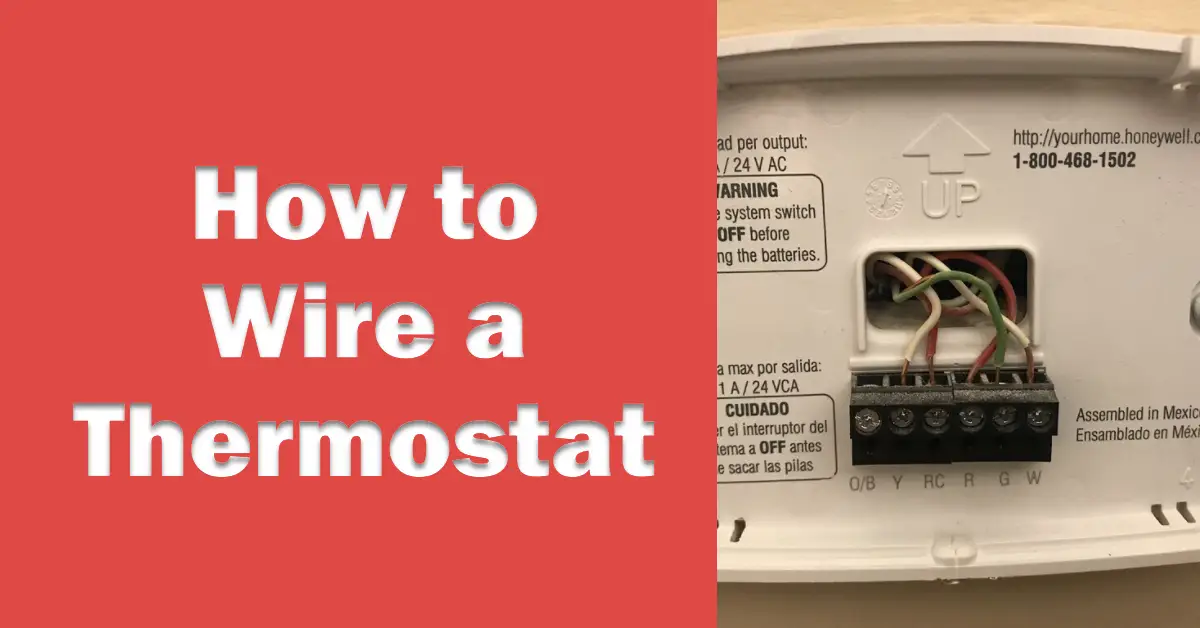Are you tired of manually adjusting the temperature on your boiler and wish there was an easier way? It would be best if you considered wiring a thermostat to your boiler.
This simple DIY project can save you time, money, and energy while providing more precise control over your home’s heating system.
With just a few materials and some basic electrical knowledge, you can wire a thermostat to your boiler in no time at all.
Keep reading for our step-by-step guide on how to get started.
Materials Needed
Gathering all the necessary materials is important before you begin wiring your thermostat to your boiler. Here are the items you will need:
- A programmable or non-programmable thermostat depending on your preference and budget. Make sure that the thermostat is compatible with your heating system.
- Screwdrivers (both flathead and Phillips), wire strippers, electrical tape, and pliers for removing wires from their terminals.
- Wire nuts in various sizes depending on how many wires you work with. It’s essential to have enough of these as they are used to connect different colored cables securely.
- Label maker or masking tape for labelling each wire before disconnecting it from the existing thermostat. This step can make things easier when connecting everything back up later.
Having all these materials at hand before starting work can help ensure a smooth and efficient installation process without any setbacks!
Step-by-Step Instructions: How to wire a thermostat to your boiler
Wiring a thermostat to your boiler may seem daunting, but it can be done easily with the right tools and knowledge.
Here are some step-by-step instructions on how to wire a thermostat to your boiler:
- Turn off the power supply of your boiler and remove the cover from it. Then locate the wiring terminals such as R (red), W (white), Y (yellow) and G (green).
- Note where each wire is connected before removing them from their respective terminals. This will make re-wiring easier later on.
- Connect the wires from your thermostat according to their corresponding colors onto these same terminals in your boiler. Remember that red goes with R, white goes with W, yellow goes with Y, and green goes with G.
- After all the wires are properly connected and tightly secured onto their terminal points, put them back on any housing or covers you removed, then restore the power supply for testing.
By following these simple steps carefully, you will have successfully wired up your thermostat system without any issues!
Safety Considerations and Tips
When it comes to wiring a thermostat to your boiler, some tips and tricks can make the process easier and more efficient.
Here are some things to keep in mind:
- Turn off the power supply before attempting any electrical work on your boiler. This will prevent any accidents or damage.
- Read the instructions for both your thermostat and boiler carefully before beginning. This will help you understand how each component works and what needs to be done.
- Label all your wires with masking tape as you disconnect them from the old thermostat. This will make it much easier when it comes time to connect them to the new one.
- Use a voltage tester after turning off the power supply before starting work on the wiring. Voltage testers help confirm whether electricity is present in wires or not.
- Double-check all of your connections before turning on the power again. It’s better to be safe than sorry.
Following these tips can save you time and frustration while ensuring a successful DIY project—a boiler-connected thermostat wired efficiently.
Conclusion
Wiring a thermostat to your boiler may seem intimidating at first. Still, it is actually a straightforward process that can save you money on energy bills and make your home more comfortable.
Remember to turn off the power before beginning any electrical work and follow the manufacturer’s instructions for your specific thermostat model.
If you need help, call an electrician or HVAC technician. Electricity and heating systems should always be handled safely.
READ MORE:
- How to Reset a Smart Thermostat (Ultimate Guide)
- Honeywell Thermostat Blank Screen: Troubleshooting and Solutions
- Ecobee Thermostat Disconnecting from WiFi: Causes, Fixes, and Troubleshooting Guide
- The Best Smart Thermostats for Garage Heater 2023
- How to Set Up the Nest Thermostat App: A Comprehensive Guide
- Luxpro Thermostat Not Working? Find Fixes and Troubleshooting Tips


